Following the declaration of war with Japan in World War Two on December 8th, 1941 and their rapid invasion of the South-West Pacific and New Guinea, by 1942 Australia was under the imminent threat of Japanese Invasion. Between February 1942 and November 1943 Japanese aircraft attacked targets in the north of mainland Australia (Northern Territory, Western Australia and Queensland) along with nearby shipping and islands at least 97 times. The worst attack made was upon Darwin on February 19th, 1942 killing between 235 to 250 people and causing widespread destruction of the city and military targets including ships and aircraft.
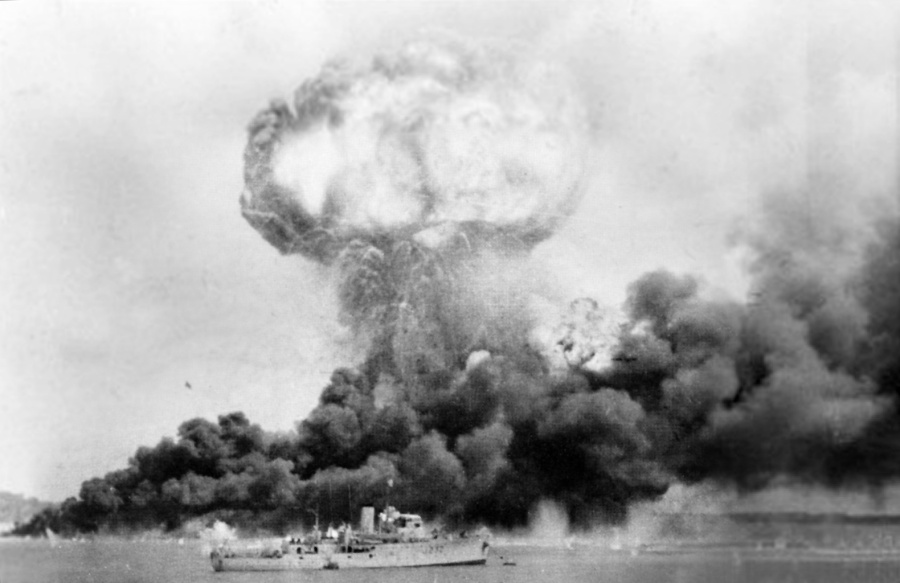
The RAAF was not well equipped with modern combat aircraft at the start of World War Two and in the first two years of war many of the RAAF pilots and air crews were serving in Europe, North Africa and the Middle East. As an emergency measure to counter Japanese attacks the RAAF was supplied with readily available fighter aircraft like the obsolete Brewster Buffalo. By March 1942 delivery of the far more capable Curtiss P-40 Kittyhawk began (enough for 3 squadrons), but more aircraft were required to defend Australia. Interestingly the Bell P-39 Airacobra was used as an interim measure by the RAAF until more suitable and capable fighters could be delivered for air defence (more Curtiss P-40 Kittyhawk’s and then Supermarine Spitfire’s were delivered from August 1942 onwards until 1945).

The P-39 was an unusual fighter aircraft in its day. The engine was behind the pilot, it had a tricycle landing gear, a 37mm cannon fired through the propeller hub and it had doors like a car to get into the cockpit! The P-39 was well armoured to protect the pilot and also had a lot of firepower. In addition to the cannon the P-39 had 2 x .50 caliber machine guns in the nose, 2 x .30 caliber machine guns in the wings and it could carry up to 230kg / 500 pounds of bomb. Ultimately the performance of the Airacobra was better suited to lower altitude operations as it lacked an effective engine turbo-supercharger (not great for intercepting enemy aircraft) and with its heavy armament it was more suited as ground attack aircraft than as a fighter but there wasn’t much else available at the time to defend the skies of Australia (interestingly the Soviet Union used the Airacobra to great effect as a fighter and shot down a large number of German aircraft with the type).

On May 31st, 1942 an attack force of 3 Japanese midget submarines entered Sydney Harbour in New South Wales (they were launched from larger submarines off the coast). The attack was not overly successful but heightened the fears of invasion. The Japanese only managed to sink one ship – HMAS Kuttabul a barracks ship was hit after they missed USS Chicago (US Navy cruiser). 21 navy personnel died aboard HMAS Kuttabul. All the subs were lost during and after the attack. The first sub became entangled in anti-submarine netting before an attack could be made and was scuttled by its crew; the second was the one that fired its torpedoes, sunk the ship and made it out to sea. For 64 years the fate of the second sub was unknown until November 2006 when divers found it off the coast of New South Wales (it remains untouched there today as a tomb to its crew); the third sub was sunk by depth charges in the harbour before it could fire any torpedoes. The 2 subs lost in the harbor during the attack were recovered and a composite of these can now be seen in the Australian War Memorial in Canberra.
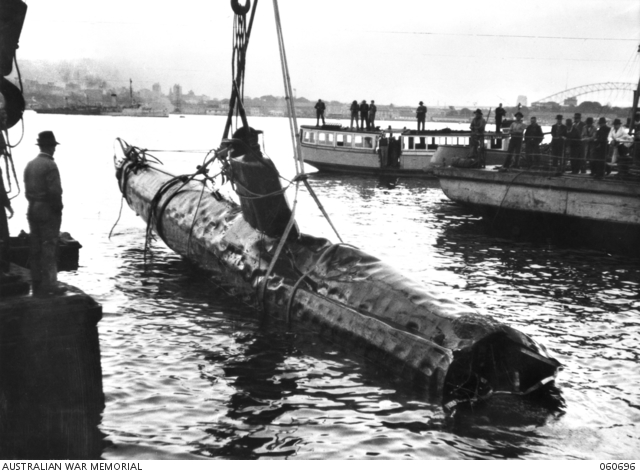
The submarine attack on Sydney Harbour and further attacks on shipping along the east coast of Australia by the larger submarines that launched the midget subs highlighted the need for better defences around Australia. As such Airacobras on loan from the U.S. 5th Air Force were used by the RAAF for air defence of rear areas such as the city of Sydney until better suited fighters could be delivered.

The first Airacobras were delivered to the RAAF in mid 1942 after being repaired in Australian workshops (in July 7 x P-39F were delivered to RAAF Bankstown, in August 7 x P-39D were delivered for RAAF use near Brisbane in Queensland, 9 other P-39D & F models received as replacements for crashed aircraft and as additional aircraft, at least 4 of these did not enter service and were returned). By November 1943 the P-39 Airacobra ended its brief career with the RAAF when all surviving aircraft were returned to the USAAF.

In 2008 I went to the Classic Jets Fighter Museum in Parafield, South Australia to see their restoration of a P-39K (S/N: 42-4312 – one of only 3 in Australia including a P-39F that is reportedly being restored to flying condition by Precision Aerospace in Victoria). They originally started with main planes and tail but no fuselage. They were later able to obtain damaged fuselages and parts from within Australia and Papua New Guinea to build a new composite fuselage to complete the Airacobra.
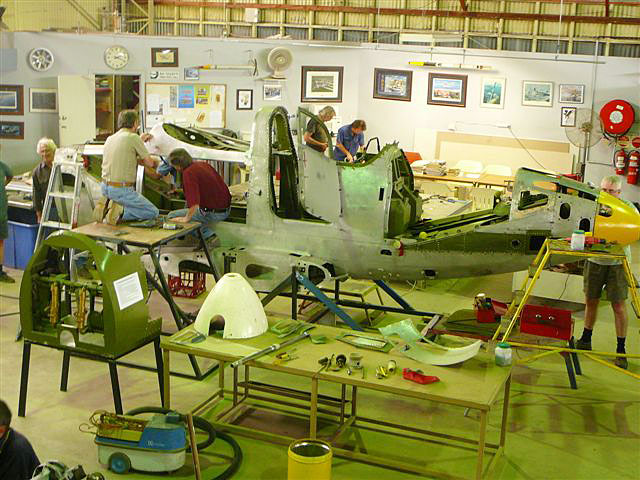
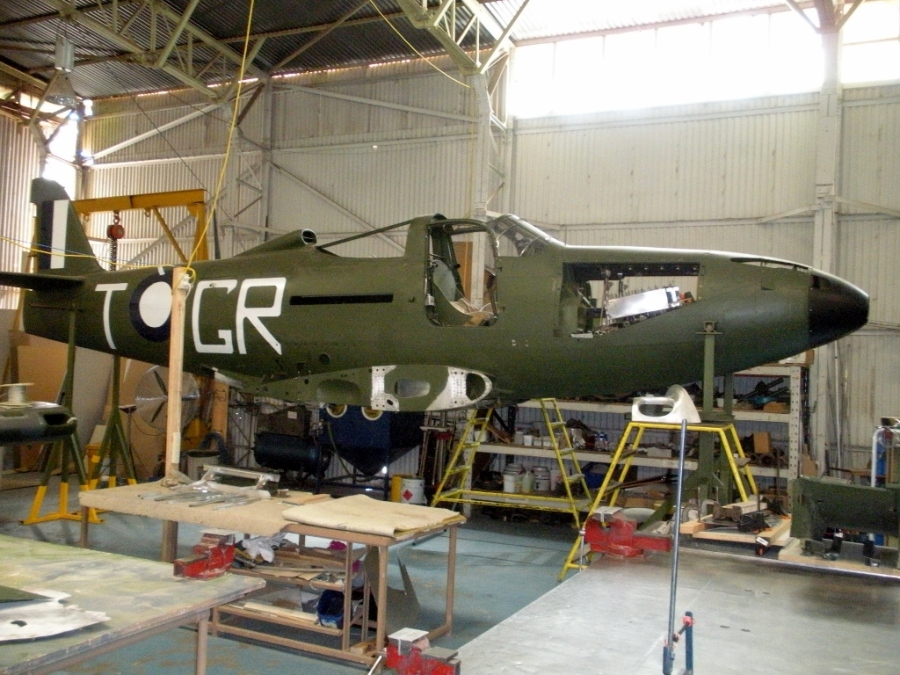

I returned to the Classic Jets Fighter Museum in 2011 to see the completed P-39K restoration. The aircraft looked fantastic. A job well done!
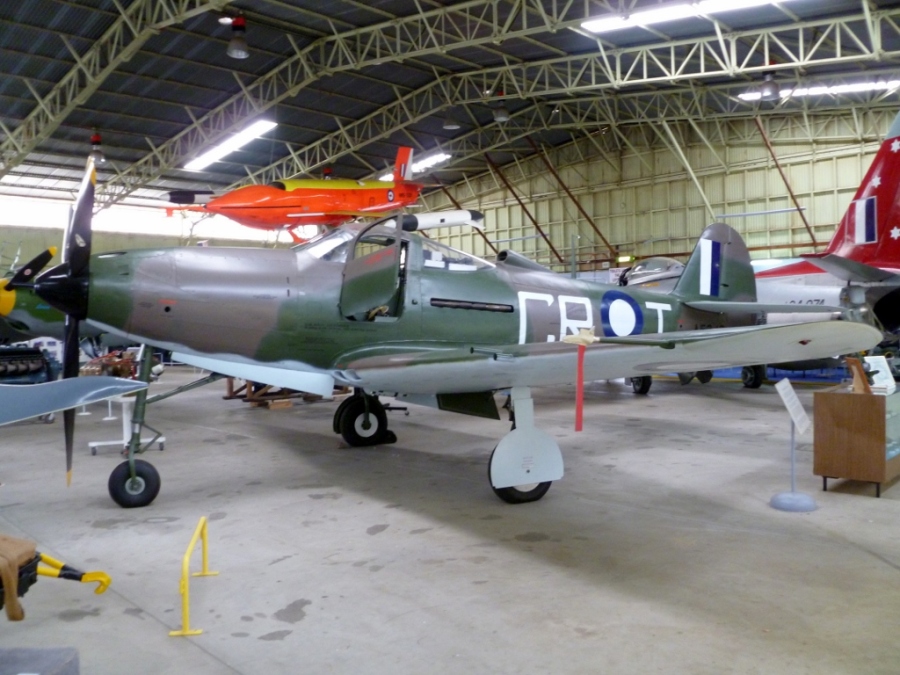

The restored P-39K is painted in the colour scheme of RAAF 24 Squadrons first Airacobra (A53-12). The aircraft it represents was flown in defence of Sydney from RAAF Bankstown following the 1942 Japanese midget submarine attack on Sydney Harbour.
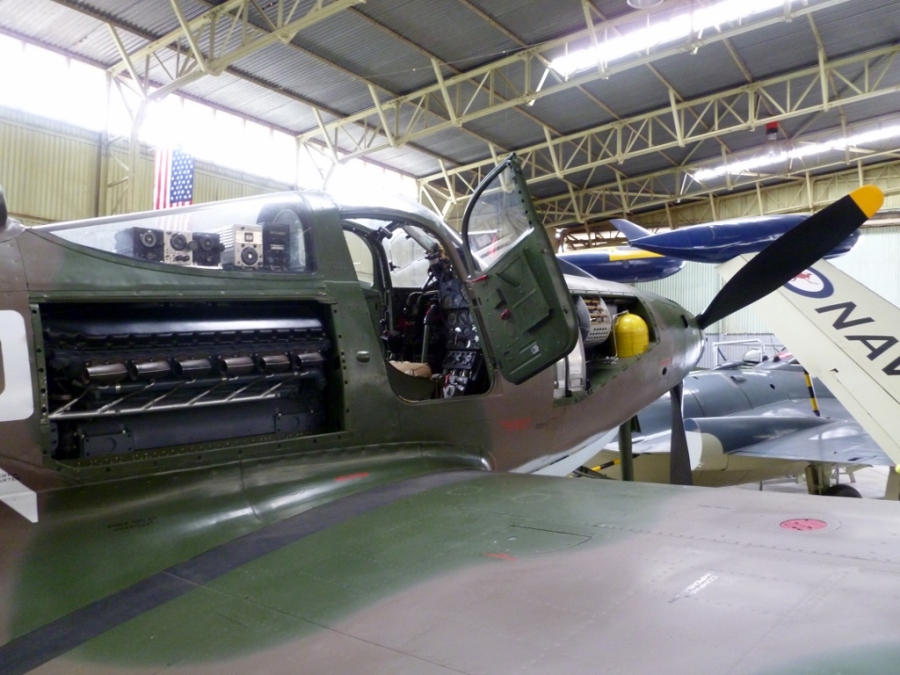
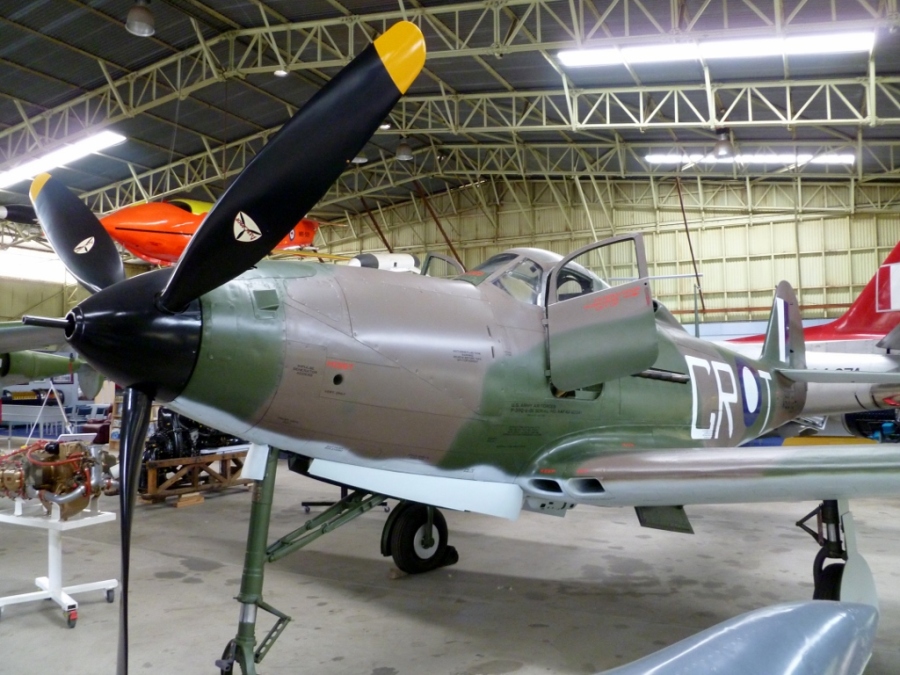


Although the P-39 had only a short career with the RAAF and was never required in combat, it filled an ominous void in times of great fear. For this alone the P-39 has a special place in Australian military history.
Addendum: As of 2016 the Classic Jets Fighter Museum is being closed and the collection sold off. The P-39 is apparently on its way to a buyer in Russia and no doubt will soon be repainted in Soviet colours. Its a pity it couldn’t stay in Australia but as with many of the aircraft there, they are now headed all over the world (luckily some are going to other Australian buyers).
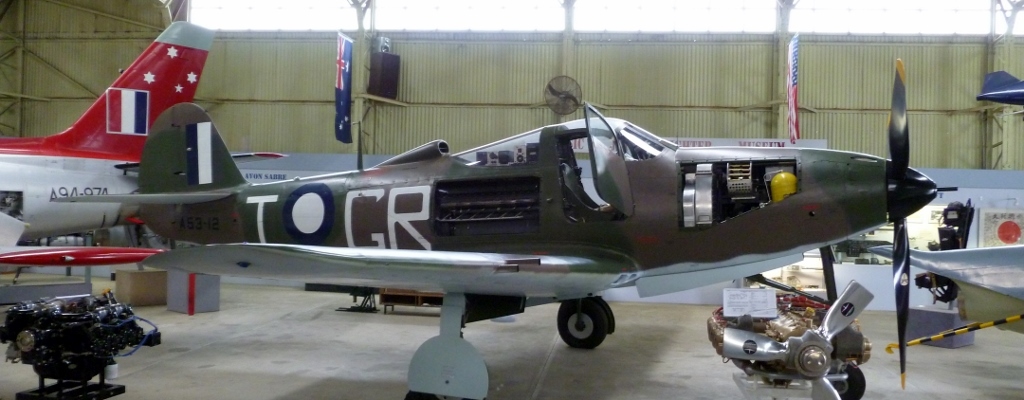
On can only wonder how its performance would have improved with the supercharger and why that addition was not allowed. The P-39 was also a tough and hardy aircraft from what Chuck Yeager said in his biography. Nice photos of the Airacobra pre and post restoration :).
LikeLike
Thanks. Yes it would be been an interesting dynamic.
I believe it was one of the highest scoring aircraft in the Soviet Air Force.
LikeLike
You likely know, but to ensure you have heard, the Aussie’s are celebrating their centennial with regard to their military aviation next month in March. Here are two links to look at — http://vintageaeroplanewriter.blogspot.com/2013/09/the-raaf-museum-boxkite-airborne.html and http://www.boxkite2014.org/boxkite_home.html
Thought I had your email but have misplaced it — hence this comment :p
Cheers, Joe
LikeLike
Thanks Joe. Yes I am in the process of writing a 4 part brief history of the RAAF 1914 to present. The first will be posted soon 1914-1939 🙂
LikeLike
Outstanding account!!
LikeLike
Thanks!
LikeLike
I am writing a 4 part series of blogs coming up on the history of the RAAF from 1914 to the present day (coming soon)
LikeLike
I’ll be here waiting!
LikeLike
[…] when the 13 surviving airframes were transferred to the USAAF) and a small number of ill-suited Bell P-39 Airacobra fighters loaned from the USAAF. These aircraft were still no match for the superior Japanese […]
LikeLike
Reblogged this on pacificparatrooper and commented:
This is an aviation site well worth taking the time to read! Enjoy your weekend!
LikeLiked by 1 person
Thanks for sharing and once again for your support. I was offline for a few days as I had headed to Yuma, AZ for a USMC airshow. I came home to lots of likes and comments 🙂
LikeLike
I’m very happy to hear that you received a lot of visitors for your post. I have quite a few favorable responses myself – come on over and read them – they are in response to YOUR work, not mine.
Hope you took a lot of pix from the air show!
LikeLike
Thanks. Will do
LikeLike
Fascinating post and photos!
LikeLike
Reblogged this on A Conservative Christian Man.
LikeLiked by 1 person
Thanks for sharing
LikeLiked by 1 person
I really enjoyed reading about an aircraft that I did not realise the RAAF had used. A wonderful restoration job, congratulations to all concerned.
LikeLike
A brief participant but an important one for the time
LikeLike
It was such a great-looking plane. Sad that it was no more successful than it was. Lots of great ideas in it.
LikeLiked by 1 person
In the hands of the Soviets it was very successful in air combat and ground attack as they mainly operated at lower levels. They really loved it apparently
LikeLiked by 1 person
Wonderful recounting of a plane lost amongst the big names of that time: the P-51, P-47, P-38… But I’ve always marveled at the door… Can’t be all that fun trying to open that door in an airstream trying to bail out…
LikeLiked by 1 person
Like jumping out of a moving jet car or the like. Not much fun at all!
LikeLike
Very interesting post Deano. Easy also for a layperson like me to understand too. Not sure if you have ever come across a book called Nor The Years Condemn. It is a novel by Australian author Justin Sheedy, and follows the experience of a young Aussie uni student who signed up for the Empire Air Training Scheme in WWII. One of the young men over in Europe while the Japanese were down here. Lots of well researched training and fighting scenes. I suspect you would enjoy it.
LikeLiked by 1 person
Thanks. Sounds good I will have to check it out
LikeLiked by 1 person
Like any man (boy) I get all excited when it comes to speed ,movability and sleek lines. I am already excited at the post to come. That P-39 is some aircraft. Love it Deano. Thanks for the post.
LikeLiked by 1 person
Gotta love this stuff! I have just returned from the Yuma Airshow in AZ. Saw some really cool USMC aircraft. Stay tuned…
LikeLiked by 1 person
What a beautiful restoration.
LikeLike
Yes they have done a fantastic job
LikeLiked by 1 person
Excellent piece of history, the Bell P-39 must have been a formidable aircraft even without the supercharger. Reconstruction crews do an excellent job in preserving these pieces of our war air fleet.
LikeLike
They had some firepower that’s for sure
LikeLiked by 1 person
Nice work. Would you like to restore one more? A friend of mine is selling P-39 parts (pulled out of the water in Russia as a complete unit, but then collapsed). Feel free to contact me for the pictures and more info.
LikeLike
Interesting. Yes unfortunately that has happened witha number of water recoveries.
LikeLike
Here is a link where I temporarily uploaded some pictures:
https://drive.google.com/folderview?id=0B4Y4UmSQwa6LMWJSQjNvdGV5SUE
LikeLiked by 1 person
Thanks Ieva. I will take a look
LikeLike
Is the door of the cockpit amongst the parts?
LikeLike
Yes, a pitty that it could not stay put together 🙂
LikeLiked by 1 person
Unfortunately for Australia this collection is being sold off. The P-39 has been sold to a buyer in Russia and will be repainted in Soviet Markings
LikeLike